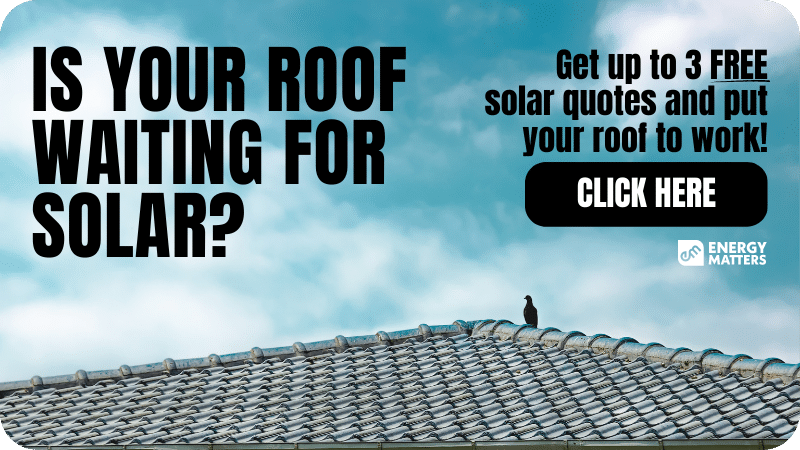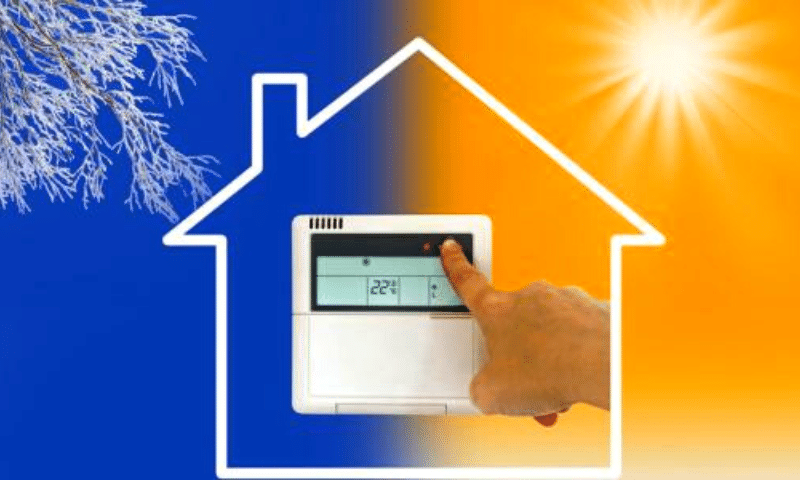
On This Page
As the world becomes increasingly aware of the need to reduce our reliance on fossil fuels, alternative energy sources such as solar thermal energy are gaining popularity. In Australia, where heating, cooling, and hot water are essential for comfortable living, solar thermal energy or hydronics systems are becoming more popular.
Solar hot water evolved! Solar hydronics (AKA solar thermal energy) technology allows not only heat water using the power of the sun, but heating and cooling your home as well! Cut your water heating and general heating bills while slashing greenhouse gas emissions!
If you’re intrigued by the idea of harnessing the sun’s power to enhance your home’s energy efficiency, consider exploring options like solar hydronics with Energy Matters. Their expertise in sustainable energy solutions could provide valuable insights tailored to your specific needs. Get your FREE solar quotes now.
Energy Matters has been a leader in the renewable energy industry since 2005 and has helped over 40,000 Australian households in their journey to energy independence.
Let us discuss and choose the best quote that suits your needs and budget, and we can connect you with our trusted local installers, who will provide up to 3 FREE quotes for your home and business solar energy system. Get your free quotes today!
What is solar thermal energy/hydronics?
Hydronics or solar thermal energy is a system that uses water to transfer heat and cool from one location to another. Hydronic solar heating and cooling systems typically consist of a boiler, pipes, and radiators or underfloor heating. In combination with solar thermal energy or hydronics can provide a cost-effective and efficient solution for home solar heating, cooling, and hot water.
How does solar thermal energy/hydronics heating work?
Solar thermal energy is the process of harnessing the sun’s energy to heat water, which can then be used for space heating, cooling, and domestic hot water. This is achieved through the use of solar thermal collectors, which are typically installed on a roof or a wall that receives a lot of sunlight.
The solar collector or specifically the evacuated tube solar collector, which is usually made of glass or plastic, absorbs sunlight and converts it into heat. The heat is transferred to a fluid, such as water or antifreeze, which is then circulated through a series of pipes or tubes to the heat exchanger or storage tank inside the home. The heat exchanger or storage tank then uses the heated fluid to provide hot water, space solar heating or cooling.
Digital system controller
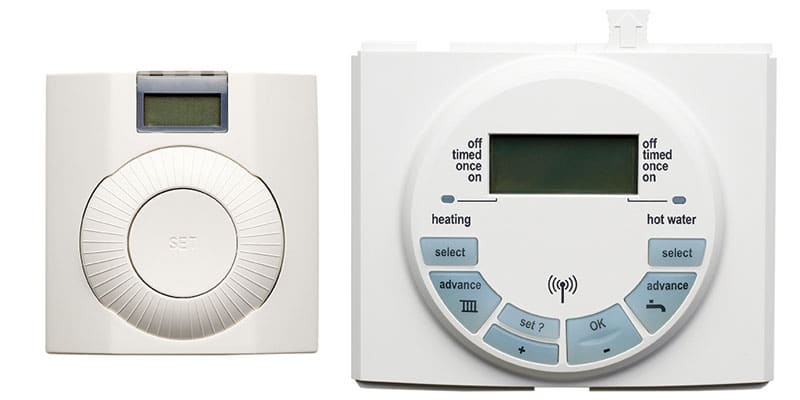
The microprocessor based gas and solar heat controller provides full system monitoring and control at a touch of a button. It features efficient seasonal control and over temperature protection.
Hydronics space solar heating
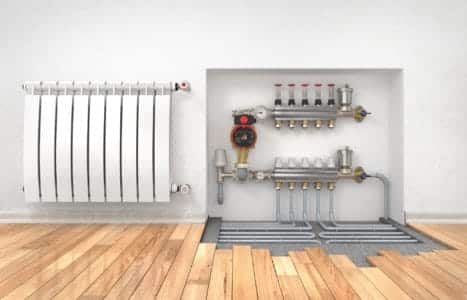
Once the water heats, it doesn’t have to just sit in the tank waiting to be used for showering or cooking. It can continuously circulate around your home to warm your entire house through gentle, radiant heat.
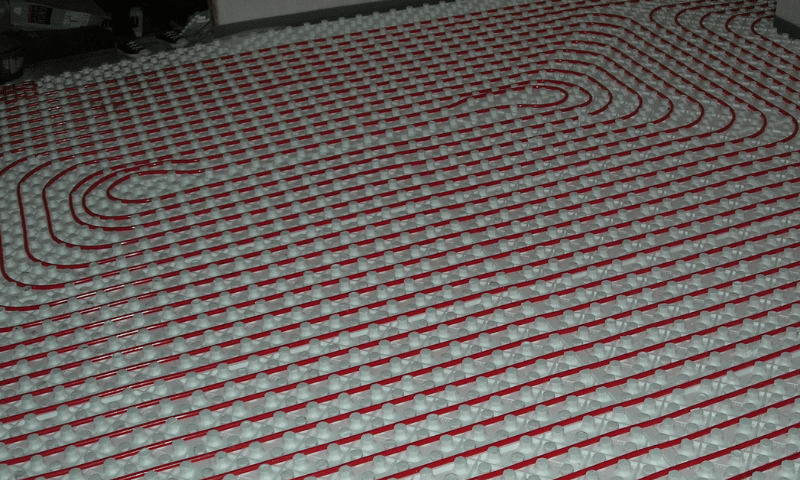
As new home construction occurs, there can be heatline piping installation under the floor or in the foundations. Hot water pumps through the pipes to generate radiant heat. Thus, there are no more cold winter floors!
Additionally, an under-floor solar heating system can cool during the warmer months. Although this does require a heat dump in summer, such as a swimming pool or spa.
These space solar heating systems can be implemented in existing hydronic systems and new homes.
Check out our page to learn more about solar hydronics.
How does hydronic cooling work?
As temperatures continue to rise, home cooling has become an essential need for many households in Australia. While traditional cooling systems like air conditioning units are popular, hydronics offers a unique and efficient alternative that has gained popularity in recent years.
There are many advantages to hydronic systems, but one of the most frequently underappreciated or unrecognised advantages is that they may also provide cooling.
At its core, a hydronics cooling system works by circulating cool water through pipes in the walls, ceilings, or floors of a home. The cool water absorbs heat from the surrounding air, creating a comfortable and consistent indoor temperature.
The process of cooling the water for a hydronics system typically involves a refrigeration cycle, similar to that used in air conditioning units. The system compresses a refrigerant gas to create a cool liquid, which is then circulated through a heat exchanger to cool the water in the system.
Once the water has been cooled, it is pumped through the pipes to the areas of the home where cooling is desired. The cool water absorbs heat from the air, creating a comfortable and consistent indoor temperature. The now-warm water is then pumped back to the central unit to be cooled again, creating a continuous cycle.
Hydronics systems also offer a more consistent cooling experience compared to traditional air conditioning units. The cool water circulated through the system creates an even temperature throughout the home, avoiding hot spots and cold drafts that can be created by traditional cooling methods.
Types of hydronic cooling systems
You may enjoy reliable, cost-effective heating and cooling all year by installing a hydronic climate control system in your house.
Depending on your residential design, products can be mounted on walls, ceilings, inside of walls or bulkheads, etc. The following are the top two choices:
Hydronic fan coil unit
These systems distribute cold air to specific rooms or the entire house using covert heat exchangers.
Without using toxic refrigerants in your home, hydronic fan coil units provide similar air conditioning to reverse cycle systems.
One of the most adaptable installation techniques, this kind of installation can end in sleek, attractive registers on floors, walls, ceilings, and bulkheads.
Underfloor Hydronic Cooling
It is possible for an underfloor system to supply both heating and cooling if you install one in your home. The in-floor plumbing system circulates cold water, which absorbs heat from the area to lower the temperature overall and chill the slab.
Because there are no vents or wall panels with this technique, the temperature is distributed silently, very evenly, and without draughts. Underfloor Hydronic Cooling does need to keep an eye on the dew point, and the system is frequently used with ceiling fans.
Allow the sun to shine
Solar thermal energy or hydronics can now provide a cost-effective solar heating and cooling solution thanks to recent developments in heat pump and photovoltaic (PV) technology. With the help of our cutting-edge hydronic system’s seamless integration with PV solar thermal panels, you can totally offset your operating costs.
You may now run an effective and ecologically friendly heating and cooling system by using energy straight from the sun by simply matching a properly sized solar PV system with a high efficiency heat pump.
Benefits of solar thermal energy / hydronics
Reduced energy bills: A solar thermal system can provide up to 80% of a home’s hot water needs, leading to significant energy bill savings.
- Environmentally friendly: No dust and allergens
Solar thermal systems produce clean energy, which helps reduce carbon emissions and contribute to a more sustainable future. With ducted heating systems, dust and allergies are a major negative; hydronic radiators operate on natural radiant heat without forced air circulation. i.e., no allergens and no dust.
- High energy efficiency rate
Hydronic systems are highly energy-efficient, using water to transport heat, which is more efficient than air.
Solar thermal systems have a high-efficiency rate, which means they can convert a high percentage of sunlight into heat energy.
- Comfortable temperatures: Silent and safe to touch
Hydronic systems provide consistent and comfortable temperatures throughout the year, which can improve indoor air quality and reduce the risk of allergies and respiratory issues.
All hydronic radiators or solar thermal panels have water temperatures that are regulated to be moderate, making them all safe to touch. Safe for young people, the elderly, and domestic animals.

The quiet operation of solar panel radiators is one of their main advantages. There are no wall heaters that constantly blow air or noisy space heaters. Your home is heated quietly and peacefully by radiant heat. As they are silent, bedrooms are ideal for them.
- Flexible design
Hydronic systems can be designed to fit the specific needs of a home, which means homeowners can customise their systems to meet their energy needs.
Visit our page to learn more about the benefits of hydronic heating.
Challenges of solar thermal energy / hydronics
High initial Investment and installation costs: The initial cost of purchasing and installing a solar thermal system can be high, which may deter some homeowners from adopting this technology.
Maintenance: Hydronic systems require periodic maintenance, which can be an added cost for homeowners.
Complexity: Hydronic systems require professional installation and maintenance, which may limit their accessibility for some homeowners.
Dependent on the weather: Solar thermal systems depend on sunlight and may not work efficiently during cloudy days or winter months.
The verdict
In Australia, solar thermal energy/hydronics is becoming more widespread. The government offers incentives to encourage homeowners to install these systems, such as rebates and interest-free loans.
Additionally, some state governments have introduced minimum energy efficiency standards for new homes, which include requirements for solar heating and cooling systems.
Solar thermal energy or hydronics systems can be used for a variety of applications in the home. For example, they can provide underfloor solar heating and cooling, which is becoming increasingly popular in Australia. This type of solar heating and cooling is highly efficient, as it heats and cools the entire room evenly and reduces the heat or cooling lost through walls and ceilings.
It is an excellent solution for homeowners looking to reduce their energy consumption and costs while also contributing to environmental sustainability. With their high energy efficiency, low operating costs, flexibility, and long lifespan, solar thermal energy or hydronics are an attractive and viable option for home solar heating, cooling, and hot water. By investing in solar thermal energy or hydronics, homeowners can not only save money in the long run but also support efforts to combat climate change and create a more sustainable future.
Now is the right time to switch to Melbourne solar energy. We recommend seeking at least 3 solar quotes to ensure that you are getting the best deal and selecting the right solar installer in Melbourne whom you can trust. With this, you can guarantee a solar system in Melbourne that meets your energy needs.
Interested in solar thermal energy / hydronics?
If you’d like to learn more about home solar hydronics, please contact us.
Switching to a better plan?
You may already have an energy plan but want to shop for a better deal. If you’re looking to save money on your electricity and gas bills, Energy Matters can help using our “Energy Health Check”!
Energy Matters’ “Energy Health Check” is a cutting-edge energy comparator tool that allows you to compare your area’s most competitive retail offers. We collect the data from our wide range of trusted retailers, allowing you to decide about changing your plan.
If your goal is to minimise the cost of your gas and electricity bills, switch to a better plan now!











